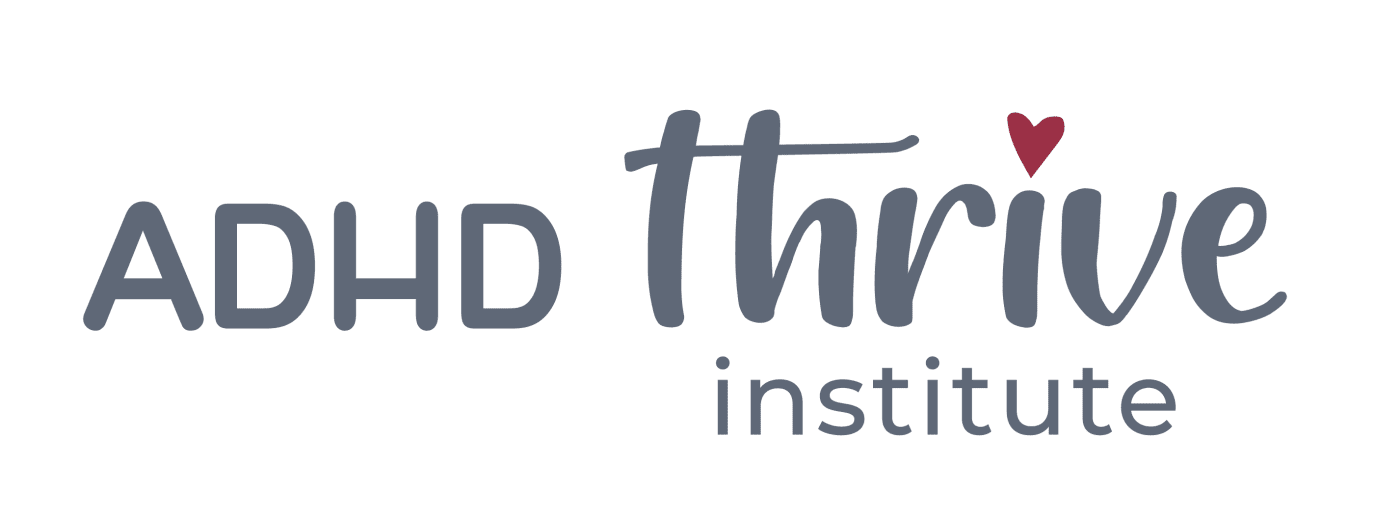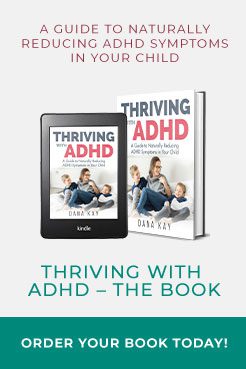Summer is supposed to be a season of fun, freedom, and relaxation. But if you’re raising a child with ADHD, you know that summer break often brings its own unique set of challenges.
Without the structure of school, your days might quickly shift into battles over screen time, endless cries of “I’m bored!”, emotional meltdowns, and disrupted routines that leave everyone feeling overwhelmed.
These are common struggles that many families of kids with ADHD face. That’s because kids with ADHD thrive on structure, predictability, and movement.
When those supports disappear in the summer, their brains (and yours) can struggle to stay regulated.
But I do have some good news. With a few thoughtful shifts, you can create a summer that’s calmer, happier, and more manageable for everyone—without rigid schedules or exhausting power struggles.
In this guide, you’ll find:
✔ Practical ADHD summer routine ideas
✔ Smart screen time strategies
✔ Fun sensory-friendly activities
✔ Tips for avoiding meltdowns
✔ Ways to help your child stay regulated and connected all summer long
Let’s dive in and start building a season that supports both your child’s brain and your family’s sanity.
Why Summer Break Can Be Extra Challenging for Kids with ADHD
Summer break sounds nice with no early alarms, no homework battles, and no school deadlines. But for kids with ADHD (and their parents), the sudden loss of routine can often cause a lot more stress than relaxation.
Here’s why summer can feel harder than expected and why a little planning can go a long way.
- Disrupted routines can lead to dysregulated emotions.
Kids with ADHD thrive on predictability and consistent structure. During the school year, they have a natural rhythm: wake up, school, activities, homework, bedtime.
When summer hits, that rhythm disappears, and with it goes a crucial tool that helps regulate some of their ADHD symptoms.
Without a daily schedule, you may notice:
- More emotional outbursts
- Difficulty transitioning between activities
- Higher anxiety levels
- Sleep disturbances
That’s why setting up even a simple ADHD summer routine can make a big difference. It gives your child’s brain the predictability it needs.
- Unstructured time can quickly lead to screen time battles.
Without schoolwork or organized activities, it’s easy for days to slip into excessive screen time.
And while a little tech can be fun, too much amplifies ADHD challenges like impulsivity, emotional dysregulation, and hyperactivity.
You might find yourself:
- Constantly negotiating screen time limits
- Dealing with explosive meltdowns when screens are turned off
- Watching your child’s mood swing wildly after too much digital stimulation
Setting clear boundaries around technology is essential to surviving summer without constant battles. (We’ll show you how below!)
- Boredom hits harder for ADHD brains.
The phrase “I’m bored!” can hit within minutes on a summer morning.
Kids with ADHD often struggle with self-directed play, delayed gratification, and sustaining attention on non-stimulating activities. When left without a plan, their boredom can quickly turn into frustration, anxiety, or even destructive behavior.
Having a flexible, easy-to-follow summer schedule with built-in movement, creativity, and downtime can dramatically reduce boredom-driven struggles.
You don’t have to overschedule your child or create a minute-by-minute itinerary. A simple, predictable framework can give your child the balance of freedom and structure their brain needs to thrive.

In the next section, we’ll walk you through how to set up an ADHD-friendly summer schedule that actually works (and doesn’t exhaust you in the process!).
Setting Up an ADHD-Friendly Summer Routine That Works
One of the best gifts you can give your child this summer is a simple, flexible routine that brings calm and predictability to their days.
Kids with ADHD do best when they know what to expect.
Without a loose structure, their brains can quickly shift into anxiety, impulsivity, boredom, and emotional overwhelm.
The goal isn’t to create a rigid schedule but to instead build a framework that balances freedom with enough predictability to help them stay regulated.
Here’s how to make it happen.
✅ Why a Summer Routine Matters for ADHD Brains
- Predictability lowers anxiety by giving your child’s brain a sense of control and safety.
- Transitions are smoother when the next step is already laid out.
- Energy regulation improves when active and quiet times are built into the day.
- Sleep and emotional health stabilize when the body clock stays somewhat consistent.
Even a very simple daily routine can really support kids with ADHD!
✅ Sample ADHD Summer Schedule (Flexible, Not Rigid)
Here’s a sample ADHD-friendly summer schedule you can tweak to fit your family’s needs:

Please Note:
Make sure and include natural movement breaks throughout the day and post a simple visual schedule for your child to see.
Additionally, notice that we have recommended screen time follow quiet time. This way, you have a built in incentive: “When you have completed your quiet time, then you get your screen time.”
✅ Key Tips for Building a Successful ADHD Summer Schedule
✔ Use visual schedules: Kids with ADHD often respond better to pictures than words. Try a simple magnet board or printable chart.
✔ Stay consistent with wake and sleep times, even on weekends! This protects emotional regulation.
✔ Keep transitions predictable: Use timers, 5-minute warnings, or countdown visuals when moving between activities.
✔ Allow for choice within structure: Let your child pick from two or three options for activities to give them a sense of control.
✔ Plan outdoor movement daily: Exercise isn’t optional for kids with ADHD. It’s a really important part of managing ADHD symptoms in the summer.
Remember: Structure creates freedom. It doesn’t have to be perfect, but small routines can make a huge difference.
Smart Screen Time Strategies for ADHD Kids This Summer
Let’s be honest: Completely eliminating screen time isn’t realistic for most families, especially during summer break. But without clear boundaries, screens can quickly go from a fun tool to a major trigger for ADHD challenges like:
- Increased impulsivity
- Mood swings
- Sleep disturbances
- Emotional dysregulation
The good news is that you don’t have to ban screens. You just need a smart strategy that keeps tech in its place without constant battles.
Why Screen Time Hits ADHD Brains Harder
Kids with ADHD have brains that crave dopamine, the “feel-good” chemical released during fast-paced stimulation like gaming, YouTube, and TikTok.
Screens flood the brain with dopamine, making real-world activities (like reading, playing outside, or chores) seem boring by comparison.
When screens are unlimited, it becomes harder for ADHD kids to regulate emotions, behavior, and attention off-screen.
That’s why structured, limited screen time is so important for a calmer, more connected summer.
Tips for Managing Screen Time This Summer

✔ Create Clear Tech Zones in the Day
- Designate specific windows for screens (example: 1–2 PM each afternoon after quiet time).
- Avoid morning tech use as it can hijack the day before it even starts.
- No screens during meals or before bedtime to protect emotional regulation and sleep.
✔ Use Timers and Visual Cues
- Set timers for tech time (visible kitchen timers, sand timers, or apps).
- Use visual schedules or screen time charts to make expectations crystal clear.
- “When the timer goes off, screen time is done—no negotiating.”
✔ Pair Screen Time with Responsibilities
Make “First ___, then screen time” agreements (example: outdoor time, chores, or creative activity first).
This helps kids develop self-regulation and understand that screen time is earned, not automatic.
✔ Build in Screen-Free Boredom Busters
To avoid tech becoming the default, have ready-to-go screen-free activities, like:
- Sensory bins
- Backyard scavenger hunts
- Water balloon toss
- Obstacle courses
- Art projects with open-ended supplies
(We’ll give you more summer activities for ADHD kids at home below, so keep reading!)
Remember: By limiting screen time, you’re protecting your child’s brain and helping them thrive emotionally, socially, and physically this summer. And small consistent limits now will lead to less arguing and meltdowns later.
For more tips about managing screen time, listen to this episode of the Soaring Child podcast with guest and Child and Family Therapist, Ashley Gobeil.
Sensory-Friendly Summer Activities to Keep Kids Regulated

One of the best ways to help kids with ADHD stay calm, focused, and emotionally regulated during the summer is to provide them with plenty of sensory-rich, movement-based activities.
When you provide opportunities for safe, structured sensory input, you help your child’s brain better handle emotions, attention challenges, and boredom, without relying on screens.
Here’s a list of easy, ADHD-friendly summer activities to keep kids moving, creating, and thriving all season long.
✅ Best At-Home Activities for ADHD Kids
You don’t have to spend a fortune or plan elaborate outings.
These simple activities offer the movement, stimulation, and calming input your child’s body craves:
- Backyard camping (set up a tent, make s’mores, tell stories)
- Sidewalk chalk murals (big motor movements + creative expression)
- Obstacle courses (indoor or outdoor, using pillows, chairs, ropes)
- Bike rides or scooter adventures
- Water balloon fights or sprinkler play (perfect sensory input!)
- Building challenges (LEGOs, blocks, or cardboard construction zones)
- Audio story time + sensory bins for quiet afternoons
✅ Low-Key Sensory Outings for Summer Fun
If you want to get out of the house without overwhelming your child’s nervous system, try these sensory-safe summer outings:
- Nature trails or botanical gardens (calming, low-noise environments)
- Early-morning beach or splash pad visits (before crowds hit)
- Indoor trampoline parks during sensory-friendly hours
- Climbing gyms with beginner walls (great proprioceptive input)
- Children’s museums or science centers (visit on low-traffic days)
- Family scavenger hunts at parks or zoos
When you go on one of these outings, always pack a “sensory toolkit” with fidget toys, noise-canceling headphones, snacks, and a small comfort item.
Building these into your daily rhythm can help prevent meltdowns, reduce screen dependency, and make summer feel a whole lot easier for everyone.
How to Prevent Meltdowns and Dysregulation During Summer
Even with the best plans in place, summer can still bring tough moments. New environments, disrupted routines, and sensory overload can quickly overwhelm a child with ADHD, and when that happens, meltdowns aren’t far behind.
The key isn’t avoiding challenges altogether, but is to instead prepare for them with calming strategies and predictable support.
Here’s how to help your child stay more regulated (and protect your sanity too!).
✅ Plan for Smooth Transitions
Transitions — moving from one activity to another — are often the hardest part of the day for kids with ADHD.
Tips for easier transitions:
- Give 5–10 minute warnings before ending activities (“In 5 minutes, it’s time to clean up”)
- Use visual timers or countdown apps to make time visible and concrete
- Create transition rituals (ex: sing a silly clean-up song, do a quick stretch)
- Offer choices when possible (“Do you want to walk or hop to lunch?”) to give a sense of control
✅ Watch for Sensory Overload
Many meltdowns aren’t about “bad behavior” — they’re the result of sensory overwhelm.
Signs your child may be overstimulated:
- Sudden irritability or emotional outbursts
- Clumsiness or hyperactivity
- Withdrawal, zoning out, or covering ears/eyes
How to prevent sensory overload:
- Take regular movement breaks when out and about
- Offer “quiet zones” at home and in public (tent corners, car breaks, noise-canceling headphones)
- Pre-plan exits when visiting busy places (know where the quiet spots or quick exits are)
✅ Stick to Consistent Sleep and Nutrition Routines
Summer fun often means late nights and sugary treats, but poor sleep and poor nutrition can make ADHD symptoms so much worse.
Tips to stay regulated:
- Maintain consistent bedtime and wake times, even on weekends
- Prioritize high-protein breakfasts to stabilize blood sugar and attention from the get-go
- If you have not already done so, summer is the perfect time to adjust a child’s diet. Cut out those top inflammatory foods and introduce more micronutrient dense foods, healthy fats, and grass fed or wild caught protein sources. For more information about how to adjust the diet to support a child with ADHD, check out these 2 podcast episodes:
Or, read this article about 3 ways diet affects mental health.

Remember, you can’t prevent every meltdown (and you don’t need to). But the more you plan for transitions, sensory needs, and daily rhythms, the smoother your summer days can become.
Extra Support: ADHD Summer Camps and Programs
Sometimes, the best way to set your child (and yourself!) up for a thriving summer is to bring in extra help and structured support. That’s where ADHD-friendly summer camps and programs can make a huge difference.
Instead of battling boredom, struggling with screen time, or managing social isolation, these programs offer structured, supervised, and skill-building activities that fit the way ADHD brains thrive.
Benefits of ADHD-Focused Summer Camps:
- Consistent routine and structure throughout the day
- Sensory-aware environments (noise, transitions, and movement needs considered)
- Trained staff who understand neurodiverse needs and behaviors
- Social skills practice in a low-pressure, understanding setting
- Physical activity woven into the day to help regulate emotions and energy
How to Find the Right Summer Camp or Program for Your Child:
When choosing an ADHD summer program, look for:
✔ Staff trained in ADHD and neurodiverse needs
✔ Predictable daily schedules (ask to see a sample!)
✔ Small group sizes and structured but flexible activities
✔ Access to sensory breaks or calming spaces
✔ A philosophy that focuses on building confidence and connection, not punishment or strict behavioral control
Keep in mind: Some ADHD-friendly summer programs may be offered through:
- Local children’s therapy centers
- Community centers with adaptive summer programs
- Nonprofits that specialize in neurodiversity and ADHD
Always schedule a quick call with camp directors. Your questions are valid, and a supportive program will welcome them!
Maybe you’re reading this and thinking there’s no way you can afford an ADHD-specific summer camp. Often times, smaller camps that aren’t specifically for children with ADHD that are offered through local organizations can still cater to neurodiverse children, so don’t hesitate to ask your local camps!
Remember: Summer camp isn’t about “fixing” your child but about giving them a place where they feel seen, successful, and supported while learning valuable skills that can carry into the school year.
And it’s OK if you need the break too. You deserve it.
You Can Create a Summer That Feels Good for Everyone
Summer break with an ADHD child can feel overwhelming, but it doesn’t have to be a constant battle. With simple routines, sensory-friendly activities, smart screen time strategies, and the right support, you can create a season that’s calmer, happier, and more connected for your whole family.
Remember:
- You don’t need a perfect schedule.
- You don’t have to entertain your child every minute.
- And you don’t need to do it all alone.
Small shifts in structure, rhythm, and emotional support can make a huge difference, helping your child stay regulated, reducing meltdowns, and allowing you to enjoy more good moments together.







